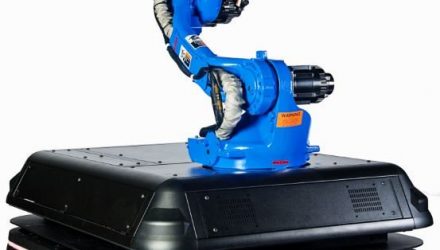There are some situations where a mobile collaborative robot will outperform a standard cobot. Here’s how to decide if your situation is one of them.
Mobile cobots are probably the next big step in collaborative robotics. They are already on the market and beginning to make their way into businesses just like yours.
But, you might be wondering: Are mobile cobots are really worth it for my specific situation?
It’s a good question. You don’t want to invest in a mobile autonomous robot unless it’s definitely going to improve your processes.
Here’s how you can find out if added mobility is suitable for your business.
Why you might want a mobile collaborative robot
A basic mobile cobot consists of a collaborative robot manipulator mounted onto a mobile autonomous base. It provides all the advantages of these two individual technologies, with the added benefits of mobile manipulation.
In our recent article, Mobile Collaborative Robots: The Next Big Thing, we introduced some of the general benefits of mobile cobot technology, including: reduced hands-on time for changeovers, reduced downtime, and better use of space. Although the benefits look promising, the real question is whether they are worth it for your unique situation. This all boils down to whether extra mobility will improve your robot’s performance for your unique task. And, if so, by how much.
As we will discuss below, there are often cheaper solutions which are easier to implement and achieve similar benefits. However, some applications can be greatly improved by giving extra mobility to your robot.
5 Situations which benefit from added mobility
Here are some examples of situations where a mobile collaborative robot would outperform a standard cobot.
1. Many small automation tasks
At Robotiq, we often talk about the fact that collaborative robots are very agile. This means that they are easy to repurpose for new tasks. As a result, users often move cobots between tasks multiple times a day.
The problem with this is that changeovers require a human to move the robot. If you find yourself dragging your robot between many, small tasks every day, it might make sense to add a mobile base.
2. Consistently small batch sizes
If your robot is being used to process large batch sizes, it is likely that a single task will take up most of its day. In this case, a mobile base is unlikely to add any extra benefits as the robot will be static for most of the time.
